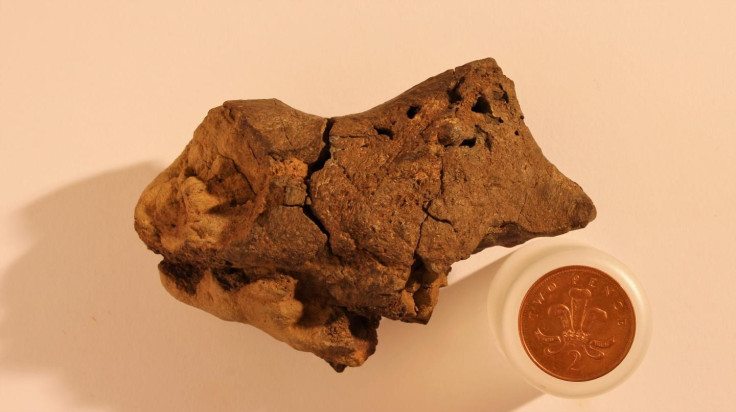Dinosaur Brain Tissue: Scientists May Have Found Important Fossil Discovery

British and Australian scientists Thursday confirmed what looked like a brown pebble found by a fossil hunter on a Sussex beach in Britain more than a decade ago actually is a piece of fossilized dinosaur brain tissue.
The researchers said in findings published in a special publication of the Geological Society of London the fossil likely came from a large herbivorous dinosaur that lived in the Early Cretaceous Period about 133 million years ago and displays similarities to the brains of modern-day crocodiles and birds.
The rare fossil was found by Jamie Hiscocks near Brexhill in 2004 and likely belongs to a species similar to the Iguanodon.
"The chances of preserving brain tissue are incredibly small, so the discovery of this specimen is astonishing," co-author Alex Liu of Cambridge's Department of Earth Sciences said in a press release.
“That is the nearest I suspect we’re ever going to get to the whole [brain],” paleontologist David Norman of the University of Cambridge said in unveiling the research at the Society of Vertebrate Paleontology’s annual meeting in Utah.
The researchers said the brain tissue was really well preserved, essentially pickled, likely in a bog or swamp shortly after the creature’s death.
"What we think happened is that this particular dinosaur died in or near a body of water, and its head ended up partially buried in the sediment at the bottom," said Norman, who coordinated the research. "Since the water had little oxygen and was very acidic, the soft tissues of the brain were likely preserved and cast before the rest of its body was buried in the sediment."
The fossil was examined with a scanning electron microscope. The researchers said the tissue showed signs of having been pressed against the skull, indicating dinosaur brains may have been larger than believed. On the other hand, the pressure markings may have been the result of how the dinosaur’s head was positioned after death.
"It was indeed structured rather like that seen typically in reptiles," Norman told Live Science. "It also does not show that dinosaurs were necessarily very smart — their brains did not fill their braincases in this instance."
"As we can't see the lobes of the brain itself, we can't say for sure how big this dinosaur's brain was," Norman said. "Of course, it's entirely possible that dinosaurs had bigger brains than we give them credit for, but we can't tell from this specimen alone. What's truly remarkable is that conditions were just right in order to allow preservation of the brain tissue — hopefully this is the first of many such discoveries."
© Copyright IBTimes 2024. All rights reserved.






















